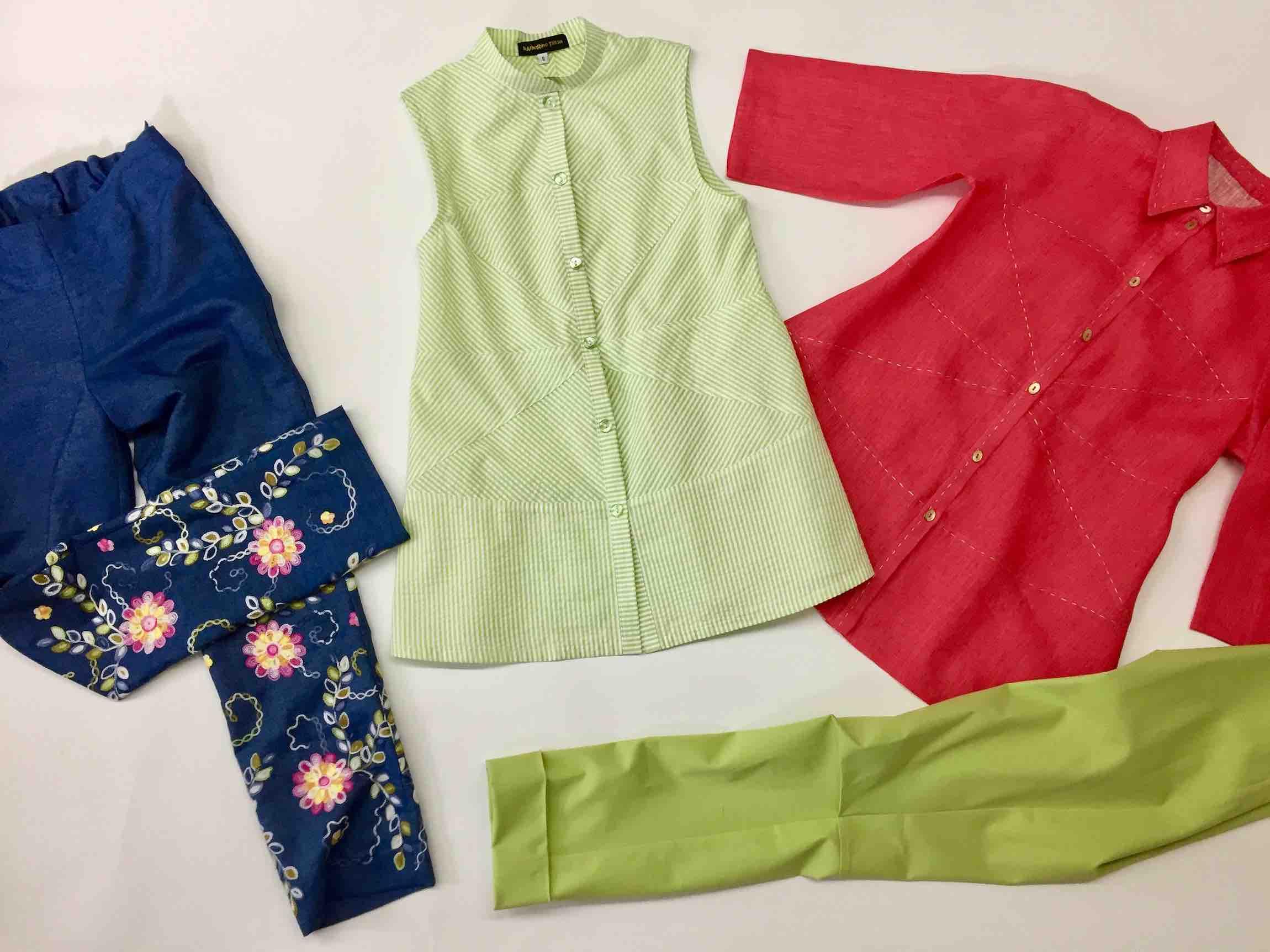
The Triangles shirt, B6667, offers numerous design opportunities; color blocking, a mix of stripes and/or prints, or clean and simple in a solid color. In any case, consider how you want to use the pieced diagonal lines on the front. The back has a slight flare on the lower edge, an above waist seam and darts which give a flattering fit. Topstitching can happen in contrasting colors by machine or by hand.

The cuff pant, B6668, is a personal favorite and I wear mine all the time. Usually black but definitely consider color or prints for Spring and Summer. Stretch woven fabrics are recommended for pull-on simplicity. The elasticized waist lies (mostly) flat in the back and keeps the waistline snug. Back pockets are handy, discreet and optional.
Katherine’s Tips:
SHIRT Butterick 6667
Suggested fabrics: linen, shirting cottons/blends, quilting weight cottons, silk broadcloth, silk taffeta, silk dupioni, seersucker, gingham, chambray, light weight denim.To make a FBA you will want to create a ‘whole’ front on new paper; make the adjustments you need; and then transfer the adjustments to the pattern pieces. (insert drawing or photo). As shown in this post.
PANT Butterick 6668
Suggested fabrics: stretch linen, lightweight stretch denim, stretch sateen, stretch poplin, novelty denim. NOTE: it is OK to use a non-stretch fabric as long as you use a zipper and adjust the fit for the fabric and your figure.- The pant is designed to sit at the natural waist (not be a hip-hugger as it appears on the model on the pattern envelope, she very clearly has an extra long rise).
- Be sure to fit the pant to your measurements, especially in the hips and the rise, and continue to fit as you sew.
- The zipper can be eliminated as long as the fabric has enough stretch for the waistline to pull over the hips.
- If using a non-stretch fabric, you must use a zipper.
- It is a good idea add 1” extra to each side seam allowance and at the waistband for final fitting purposes.
- Construct the pant, leaving the side seams until last. Sew inseam, and crotch seam, then fit at the side seam. I pin the side seams, wrong sides together with the pins on the seam allowance, pinned parallel to the raw edge. Or, machine baste.
- Try on the pant and adjust as needed.
- If you want to try the pattern in a woven that is not stretch, plan to add a zipper to the center back so it is easier to fit.





